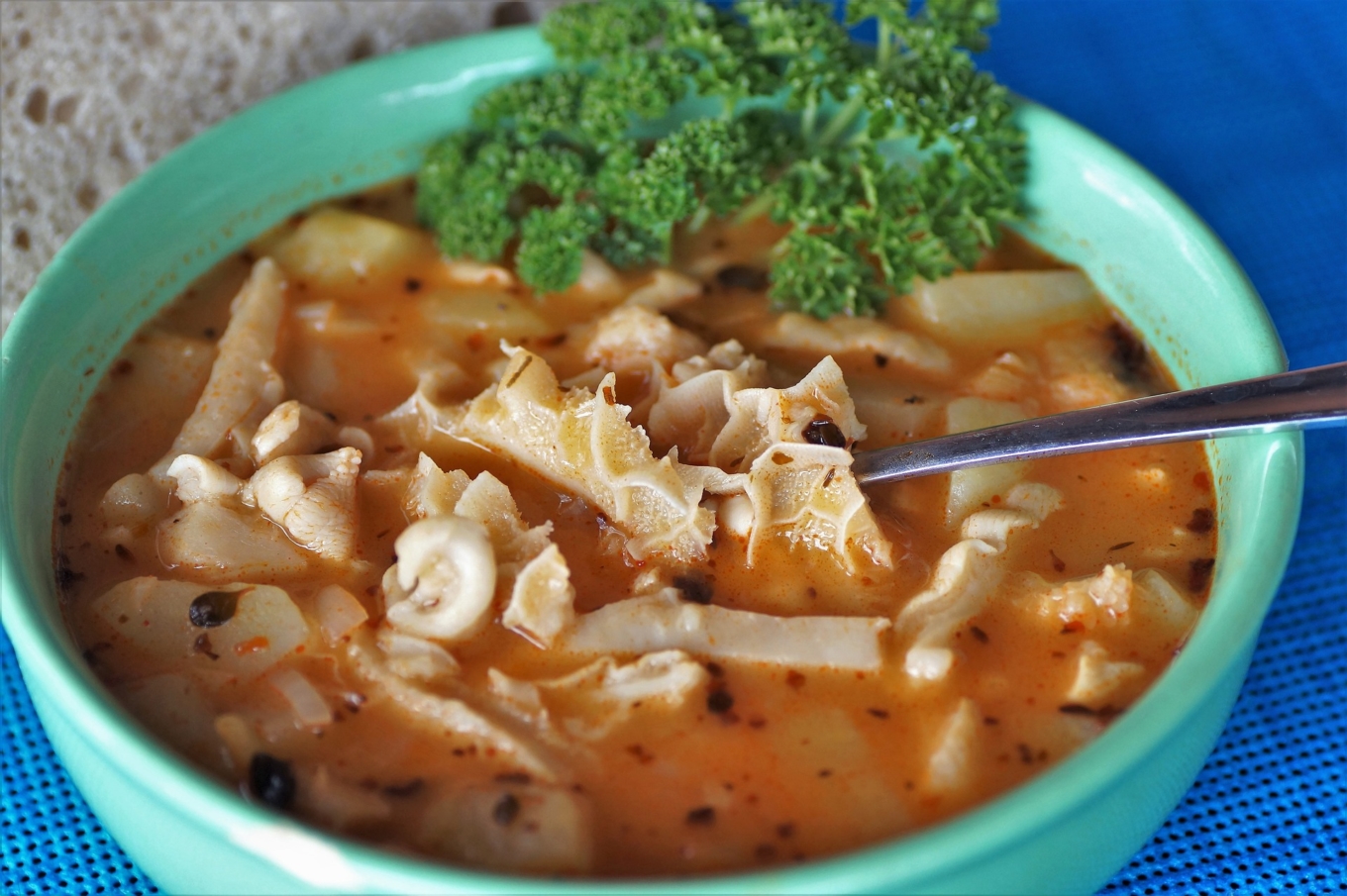Offal fans rejoice! This article is all about that ‘nose-to-tail’ favorite, tripe.
What is Tripe?
Tripe is the edible stomach lining sourced primarily from cows (with the occasional source from other ruminants, such as sheep or goats). There are three primary types of tripe used in cooking; blanket tripe, honeycomb tripe, and bible or book tripe, each named for their unique appearance. As most ruminants have multi-chambered or multiple stomach compartments, these tripe types are sourced from the different areas of the cow’s stomach.
Many cultures have tripe as an integral part of their culinary heritage, using this ingredient in a plethora of comfort themed recipes and dishes.
Cooking Tripe

There are several steps that occur prior to you bringing the tripe home from the butcher shop. The tripe is first ‘dressed’, this usually involves an extensive cleaning, par-boiling, and potential, food-safe bleaching. Once home, tripe needs to cook for a very long time in order to achieve fork-tender perfection (on average, tripe is best when cooked for eight hours or more). Perfectly cooked tripe should have a texture similar to calamari. Tripe is also exceptionally compatible with other ingredients, absorbing massive amounts of flavor, making them ideal for stews or soups. Some of our favorite tripe recipes include Florentine-style Tripe and classic Mexican Menudo.
Sourcing Tripe
Tripe can easily be sourced from Italian, Latin, or Asian grocers, or, call ahead to your local butcher to place an order. Be sure to inquire (from your butcher) what preparation or dressing steps have already been done to your tripe. Or, check out this step-by-step article for proper tripe cleaning and dressing. Freeze tripe if you’re not planning on using it right away.



